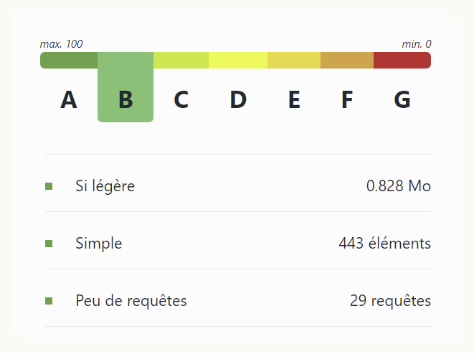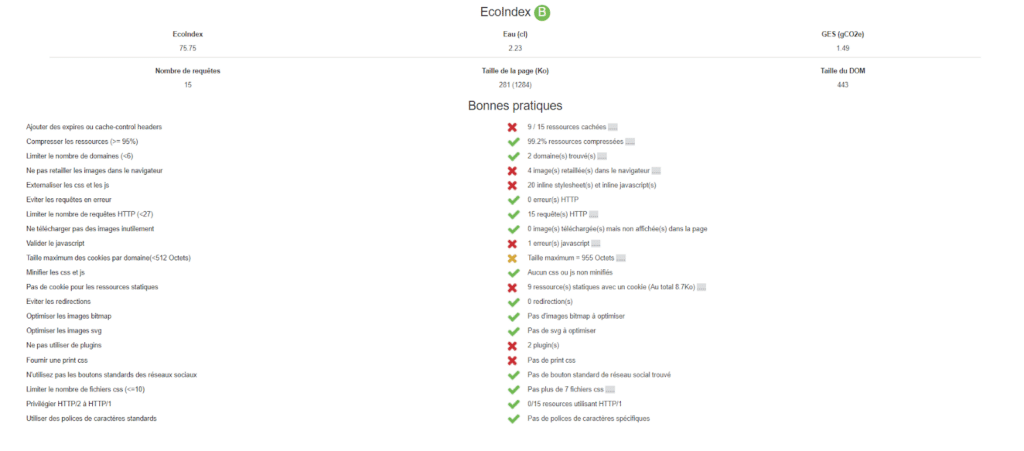EcoIndex, eco-design: 9 key points for complete control of your digital energy performance certificate:
- Page weight
- Number of HTTP requests
- Image optimisation
- Use of external resources
- Minification of JavaScript/CSS scripts
- An advanced and controlled cache system
- Trackers and analytics tags
- Complexity of the DOM structure
- Automatic dynamic content

Each of these elements will have an impact on your final EcoIndex score.
Our expertise in ethical design and eco-design leads us to focus on three major elements:
The weight of your pages
Say goodbye to heavy videos and animations that weigh down your pages and your EcoIndex!
Opt for pure CSS animations, without unnecessary external JavaScript, for optimal performance.
You can also choose a global JavaScript library and share its use.
At Magina, we have the tools and technical solutions to bring your most ambitious ideas to life in a light and fluid way.
In concrete terms, this means:
- High-performance CSS animations: we rely on CSS3 for ultra-smooth transitions and keyframes, even on mobile devices. No heaviness, just efficiency.
- GPU boost: our animations harness the power of the GPU for ultra-smooth rendering without overheating the CPU.
- Lazy video loading: we load videos when they are essential, at just the right moment, so that your site remains fast and the user experience is top notch. And above all, we compress videos as much as possible without compromising quality.
With our solutions, you get fast, lightweight, and green animations and interactive experiences without sacrificing creativity.
Simple, effective, and eco-friendly.
Server cache and application cache
The objective of eco-designed server caching and application caching is to reduce resource consumption by avoiding the need to recalculate or reload data that has already been processed. Server caching stores responses to frequent requests, while application caching stores data processed by the application. This reduces page loading times, saves bandwidth and reduces energy consumption, while improving performance for users.
At Magina, we have customised our own nginx cache for classic applications and websites, combining and minifying all our files and style sheets to consume as few resources as possible. And we do this through an industrialised process.
We also offer more powerful caching solutions such as REDIS, Varnish, and Memcache. We can advise you on the impact of adding a cache to your DBMS (database), application, or hosting. Often, a combination of these options is the optimal solution.
Cache your resources, boost your EcoIndex!
The complexity of the DOM
The complexity of the DOM (Document Object Model) plays a key role in the environmental impact of a web page, as assessed by the EcoIndex. An overly complex DOM, with numerous nodes, nested elements and unnecessary tags, increases rendering time and places greater demands on the processor, thereby increasing energy consumption. Simplifying the DOM not only optimises browser performance by reducing the computational load, but also improves page loading speed.
In eco-design, a streamlined and well-structured DOM therefore helps to reduce the carbon footprint of websites (and thus improves your EcoIndex) while offering a better user experience.

A cache problem?
Need eco-design/EcoIndex?
Ask us your questions, we will advise you!


